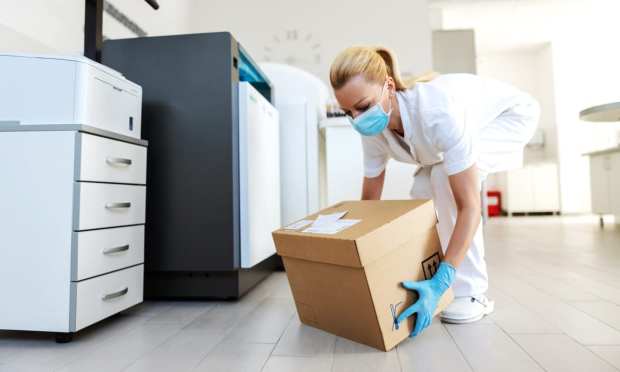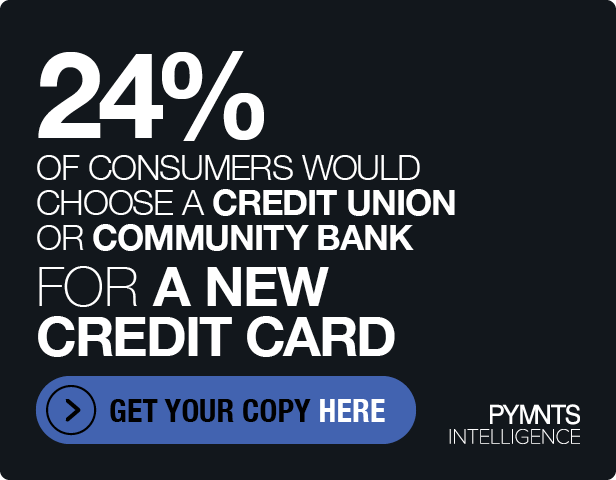Incentivize Consumers To Take The COVID Vaccine? Payments Players Might Have The Answer

It’s never a good sign when, during a pandemic, the expert opinion on the ground is that the U.S. is currently in the process of “rounding the corner into a calamity.” That rather stark opinion comes care of Dr. Leana Wen, an emergency medicine physician and a visiting professor at George Washington University, who spoke to CNN over the weekend about the deteriorating situation based on the case number count. The number of COVID-19 patients in U.S. hospitals reached record levels on Saturday evening (Nov. 28), with 91,635 Americans hospitalized with the virus, according to the COVID Tracking Project.
And with surging cases comes a climbing death toll: The daily average across seven days was 1,477 deaths as of Friday. But more than 2,100 deaths were reported on each of the two days before Thanksgiving, the highest level since last April. And experts are warning that given the spike in cases nationwide, we should expect to see that national death toll to double over the next 10 days to reach 4,000 daily.
The remaining bright spot shining through the dark pandemic clouds heading into the holiday season is the possibility that COVID-19 may be coming to an end someday soon. There are now three different firms on the verge of submitting highly effective vaccines to regulators worldwide for emergency approval. As of last week, The Federal Aviation Administration (FAA) said it has supported “the first mass air shipment” of a COVID-19 vaccine.
“As a result of the historic pace of vaccine development through Operation Warp Speed and careful logistics planning, the FAA today is supporting the first mass air shipment of a vaccine,” the agency said in a statement on Friday (Nov. 27).
The FAA noted that it is still perfecting methodology for shipping vaccines with specialized transport needs – like the forthcoming Pfizer vaccine that needs to be kept chilled at negative 75 degrees Fahrenheit to remain viable for use – but it is confident that this hurdle will be soon overcome.
In short, COVID-19’s second wave is building to a terrifying crest just as a vaccine is coming soon(ish). But will people take it when it arrives? According to PYMNTS data, when surveyed directly, 38.4 percent say they definitely won’t or likely won’t get the vaccine, while 37.9 percent say they definitely or likely will. The remaining 23.7 percent count themselves as maybes.
And all that resistance is a problem, not just for those who fail to get the vaccine. With an average efficacy rating of 90 percent logged in the vaccine trials, 80 percent of Americans would have to be vaccinated to achieve the type of herd immunity necessary to end the pandemic on the whole.
Consumers, it seems, need additional incentives to get the vaccine, above and beyond immunity to the virus that locked us all indoors all year and seems to be making a concerted effort to cancel Christmas in 2020. And this, as Karen Webster noted in a recent commentary, is where payments players have an opportunity to help push a vaccine by creating richer incentives to get it.
“If there’s one thing these players know how to do, it’s motivating people to take action and to use digital platforms and methods to distribute those incentives. Imagine if, instead of getting a ‘flu fighter’ Band-Aid at the pharmacy when getting the vaccine, that person got an eGift card that is spendable at the pharmacy. Or a credit to their digital wallet. Or something,” Webster noted.
A slightly out-of-the box idea, but not unheard of as healthcare has moved toward greater digitization over the years. Walmart, for example, has made health and personal care a big area of investment, with a particular focus on removing friction and creating stickier consumer relationships. The retailer has made the Walmart app more Rx-friendly, opening express lanes in stores to reduce the amount of time people spend waiting in lines for refills. Walmart now operates 19 clinics inside its stores to attend to routine, non-emergency health matters.
Moreover, in recent years, Walmart has used its size and scale to support programs that incentivize consumers into healthier eating and more frequent doctors’ visits. For example, women on Medicaid who maintain a regular schedule of prenatal doctors’ visits get incentives to buy specific items at Walmart to keep themselves and their babies healthy. Others with chronic health conditions, such as diabetes or hypertension, are given similar offerings.
Or one can look to ridesharing companies like Uber and Lyft, which are attempting to take on medical accessibility by offering transportation services to patients needing to get to healthcare appointments.
In June of 2019, Lyft became the first ridesharing firm to offer on-demand transportation for eligible Medicaid beneficiaries, thanks to a May policy change made by Arizona’s Medicaid agency that allows ridesharing providers to offer rides to patients who can’t secure their own transport to healthcare appointments. That has now expanded to Medicare beneficiaries in six states, although it is still in a pilot phase.
“Really, what we have been working on is connecting and talking to forward-thinking regulators in various states to get (transportation network companies) or rideshare formally included into their Medicaid programs,” said Meghan Callahan, who assumed her post as Lyft’s vice president of healthcare last year, according to Modern Healthcare reporting.
Dan Trigub, head of Uber Health, further noted that while Uber can’t solve all of the “medical no-show” problems – as there are myriad reasons that people fail to go to the doctor, beyond transportation issues – early research demonstrates that in many populations, the strategy has taken a pretty significant bite out of the problem. According to a recent pilot study at a pediatric hematology clinic at Boston Medical Center, ridesharing services reduced the clinic’s no-show rate by 8.5 percentage points.
And in highly recent news was Amazon’s announcement of a new separate storefront: Amazon Pharmacy.
Via Amazon Pharmacy, consumers will be able to tap into a new self-service platform via their computers or smartphones that will allow them to store payments and insurance information and manage their medication and refills. Amazon is preparing to sell medications at a vastly discounted rate for consumers who pay without using insurance. Brand-name medications will be priced at 40 percent off, and generics will be discounted by 80 percent. Consumers will also be able to shop from over 50,000 participating drugstores.
“We designed Amazon Pharmacy to put customers first — bringing Amazon’s customer obsession to an industry that can be inconvenient and confusing,” said TJ Parker, vice president, Amazon Pharmacy.
Beyond savings, Amazon is also trying to inject transparency into drug pricing so that any patient can easily understand their options and what they are paying for them. The company said consumers can compare prices directly, place their orders for the lowest available price and have their medications delivered quickly to their doorsteps.
And while Amazon’s announcement of its official direct competition in the space took a bite out of its competitors’ stock prices, Walgreens, Rite Aid and CVS have all spent the year upping their digital game and enhancing their ability to offer a stickier, more seamless and more pleasant pharmacy service.
Will all of these payments and retail luminaries find a way to flip more of those “probably nots” and “maybes” from PYMNTS’ survey into vaccine enthusiasts? Given the rate at which case counts are climbing, we all better hope so.
